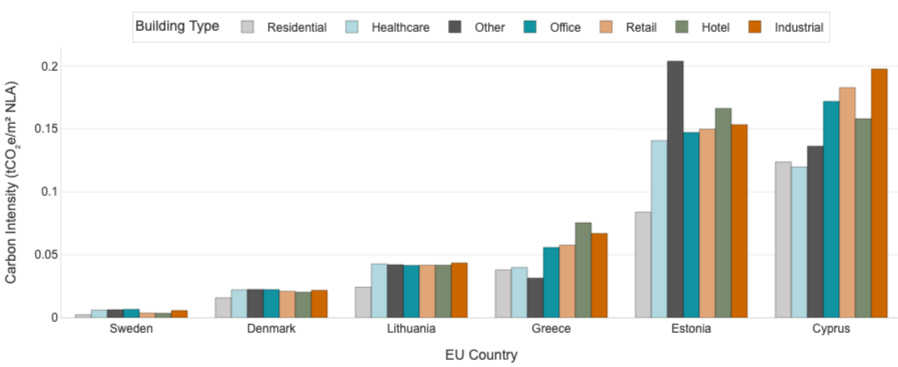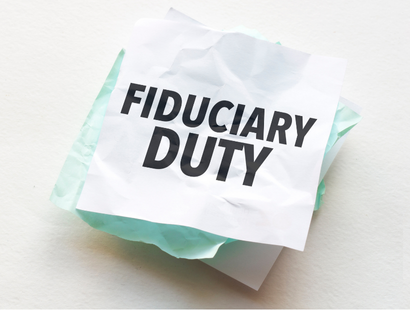
Emmi has expanded its carbon estimation methodology to cover global corporate real estate for Scopes 1 and 2. This update enhances our ability to support institutional investors with accurate, scalable, and auditable real estate emissions data across international portfolios.
This update builds on our NABERS-based model (Australia). It extends our coverage to key international markets, enabling deeper insights into the transition risks and emissions liabilities embedded in property holdings, especially where reported data is missing or inconsistent.
Why Real Estate Need Better Carbon Data
Although investment-grade real estate accounts for less than 1% of global assets, including debt (Ocorian), buildings consume approximately 18% of the global energy produced (IEA). This mismatch presents a blind spot for investors.
As global climate regulations tighten, investors face pressure to account for all financed emissions, including those from property. Without high-quality, location-specific data, real estate assets may carry unseen carbon exposure and significant future liabilities. They need clear, auditable and scalable carbon metrics, especially for assets like real estate that may carry hidden carbon risks.
What's New in the Model
Our upgraded methodology:
- Maps European building Scope 1 and Scope 2 intensity factors by property type and country as seen in Figure 1a.
- Maps all major international markets and U.S. states to EU countries by incorporating national grid carbon intensity to adjust for localised emissions (Figure 1b)
- Delivers consistent, comparable Scope 1 and 2 emissions estimates even in the absence of reported building data. We’ve leveraged this data to create globally scalable emissions estimates.
The ratio of Scope 1 to Scope 2 emissions generally ranges between 10% and 50%, depending on building type and location, as property emissions generally come from energy consumption. We treat buildings as whole assets, regardless of ownership or tenancy status, and therefore do not produce Scope 3 estimates.
This enables investors to assess financed emissions from buildings using a globally consistent approach, which is critical for multi-asset, multi-region portfolios.


Transition Risk is Location-Dependent
Using Emmi’s transition risk model, running the NGFS Net Zero scenario, we analysed a standard real estate asset:
- 15,000 m² net lettable area
- $20M USD estimated market value
Results vary dramatically based on geography. For example:
Country - Emissions Profile - Estimated Capital Risk (PCL)
Sweden - Low (renewable grid) -<1%
Germany - Low-moderate - <5%
Cyprus - High (coal-heavy grid) - >50%
Poland - High - >60%
This simulation demonstrates how local energy grids and building efficiency standards materially influence emissions and financial risk. Differences in Net Lettable Area intensity across countries and building types drive clear variation in Building Emissions and Potential Carbon Liability (PCL), as seen in Figure 2 and the Table above. The widespread, even among similar building types like offices, highlights the need for location-specific asset-level analysis when evaluating emissions and transition risk in commercial real estate portfolios.
Building Scope 1,2 Emissions vs Potential Carbon Liability
NGFS Net Zero Scenario – Commercial Real Estate location and type directly impacts emissions and associated transition risk

Why This Matters for Investors
With this expansion, Emmi equips portfolio managers and asset owners to:
- Benchmark emissions and transition risk across real estate assets globally
- Prioritise regions with lower climate-related financial risk
- Improve reporting alignment with TCFD, ISSB, SFDR, and other frameworks
- Support risk-adjusted capital allocation
- Reduce reliance on incomplete or proxy-based estimates
It’s not only about climate - it is about future-proofing your investment decisions.
What's Next
Emmi is investigating the integration of internationally recognised real estate certifications such as BREEAM and LEED to further improve accuracy and comparability. These frameworks provide valuable benchmarks that enhance the precision of carbon estimates when combined with emissions intensity and grid data. As countries continue to decarbonise their electricity systems, Emmi will also update its national intensity factors to ensure climate risk estimates reflect current grid performance. This expansion is part of Emmi’s broader vision to embed high-quality climate data into investment decision-making across every asset class and region.
A Broader View of Portfolio Climate Risk
With this global real estate expansion, Emmi further supports climate and transition risk assessments across all major investment-grade asset classes. If your portfolio spans borders, this is not merely a methodology upgrade; it is a compliance edge and a competitive advantage.
Explore our latest research to see how better carbon data supports better investment management.
Emmi’s proprietary machine-learning model provides financed emissions data and climate risk analysis across all major public and private asset classes.
Built on objective, complete, accurate, and timely data principles, Emmi’s methodology ensures that every data point is transparent and reusable.
Our tools also translate emissions into financial implications, based on climate and pricing scenarios. This gives our clients actionable insights about their carbon exposure.


